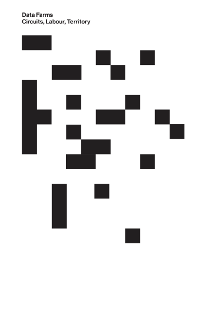Data Farms
edited by Tsvetelina Hristova, Brett Neilson and Ned Rossiter

- Low Latencies
- Published: 2022
- ISBN: 978-1-78542-126-6
- PDF ISBN: 978-1-78542-125-9
What is at stake in naming data centres as data farms? These installations are essentially hangars packed with computers. They congregate servers, switches and wires that facilitate the storage, processing and transmission of data in high volumes and at fast speeds. Data centres present a scale of operations, potentially planetary in scope, that intensifies and multiplies the productive and extractive capacities of digital technologies. The economic advantages that accrue to parties with servers in these installations derive not only from opportunities for peering and networking but also from inputs to client machines that may be situated at vast distance. Yet data centres have precise locations, often clustering where there is access to energy, skills, land concessions, tax exemptions or undersea cables. There are no data centres without land and water. Like the ‘dark satanic mills’ associated with the factories of the industrial revolution, data centres burn fossil fuels. Yet, despite these continuities with agrarian and industrial activity, the data economy generates stark figurations of territory, power and circulation.
Editor Bios
Tsvetelina Hristova is Postdoctoral Research Fellow at the Institute for Culture and Society, Western Sydney University.
Brett Neilson is Professor at the Institute for Culture and Society, Western Sydney University. He is author, with Sandro Mezzadra, of Border as Method, or, the Multiplication of Labor and The Politics of Operations: Excavating Contemporary Capitalism.
Ned Rossiter is Director of Research at the Institute for Culture and Society, and Professor of Communication, School of Humanities and Communication Arts, Western Sydney University. His current book projects include Media of Decision and (with Soenke Zehle) The Experience of Digital Objects: Automation, Aesthetics, Algorithms.
